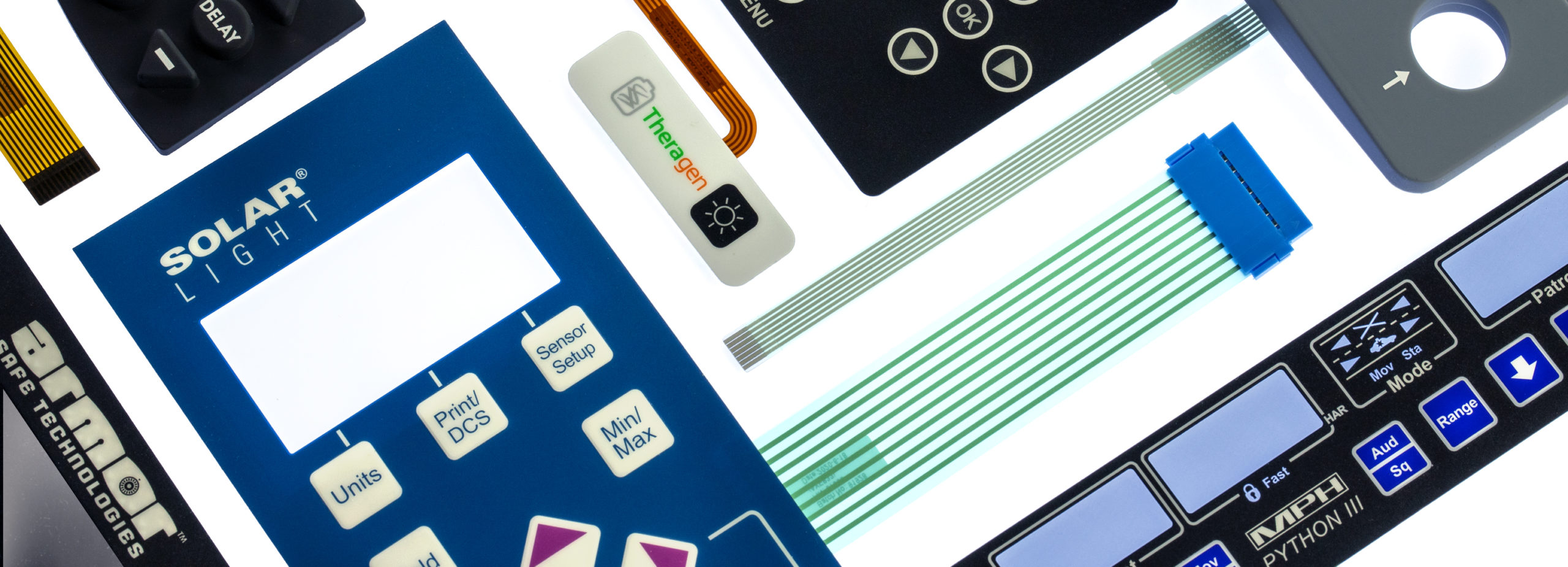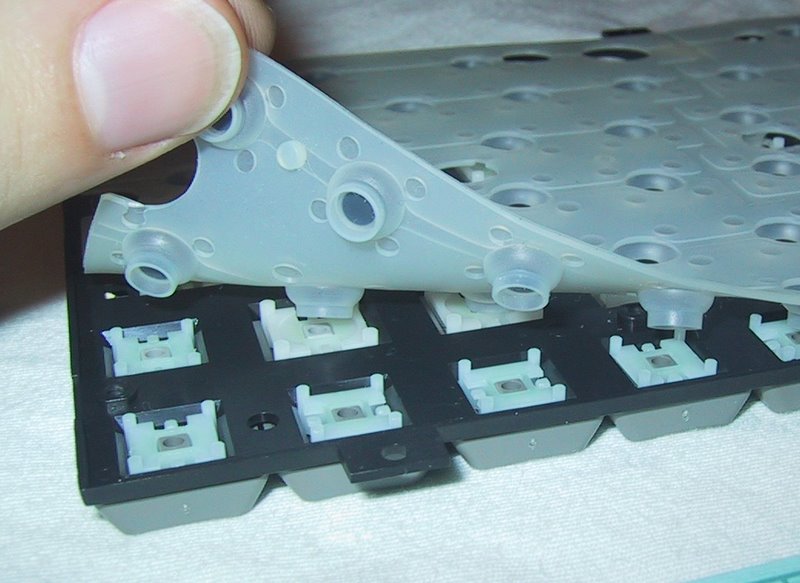Reliable Membrane Switch Manufacturer for Personalized Electronic Interfaces
Comprehending the Significance of Membrane Switch in Modern Electronic Devices and Their Applications
Membrane switches over act as a crucial part in modern-day electronics, providing an effective interface for user communication. Their customizable and light-weight nature makes them ideal for a variety of applications throughout varied markets. Comprehending their vital components and advantages can offer insights right into their expanding relevance. As innovation proceeds to breakthrough, the development of Membrane switches over questions concerning their future applications and layout technologies. What lies in advance in this vibrant area?

What Are Membrane Switches?
Membrane switches are crucial elements in contemporary electronic devices, functioning as interface that help with communication in between devices and customers. These switches are composed of a number of layers, consisting of a visuals overlay, a glue layer, and a circuit layer, all of which collaborate to develop a durable and useful interface. The layout permits for a level, inconspicuous solution that can be customized pertaining to size, form, and aesthetic appearance, making them appropriate for numerous applications, from consumer electronic devices to clinical gadgets. The tactile feedback supplied by Membrane switches enhances individual experience, while their resistance to dust and wetness makes them perfect for testing environments. Additionally, Membrane switches can integrate features such as backlighting and printed graphics, further expanding their functionality. Their flexibility and robustness make them a preferred selection in sectors where reliability and simplicity of use are vital, ultimately adding to the seamless operation of contemporary digital tools.
Secret Parts of Membrane Switches Over
While different elements add to the performance of a membrane button, 3 primary layers play substantial roles in its design and operation. The leading layer, normally made from a long lasting polymer, works as the user interface for user communication, often featuring printed icons and graphics. Below this is the spacer layer, which maintains the essential distance in between the top layer and the circuit layer. This spacer layer assurances that the switch turns on just when pushed, avoiding unintentional inputs. Finally, the circuit layer consists of conductive traces that complete the electric circuit when the leading layer is dispirited. These traces can be made from numerous materials, consisting of copper or silver. With each other, these parts create a durable and dependable device that is compact and functional, ideal for a variety of digital applications, from home devices to medical tools. Comprehending these key parts is important for valuing the total functionality of Membrane switches.
Advantages of Making Use Of Membrane Switches Over

Membrane Switch Production Refine
Comprehending the Membrane button production process reveals the intricate steps included in producing these crucial elements. The procedure usually begins with the design stage, where requirements and designs are produced using specialized software application. Following this, the graphic overlay is printed on a versatile substratum, typically using high-resolution printing techniques to ensure clarity and precision.Next, the glue layers are applied, which offer to bond the numerous parts together. The circuit layers, made from conductive inks or products, are then printed onto a separate substratum. These layers are thoroughly lined up and laminated flooring to produce a practical switch.After setting up, the buttons undergo examining to confirm capability and durability. Quality control steps are executed throughout the procedure to recognize and fix any type of issues. The finished Membrane switches are packaged and prepared for circulation, ready to fulfill the needs of modern-day electronic applications.
Applications of Membrane Changes in Different Industries
Membrane switches are significantly made use of across different markets, specifically in medical tools and customer electronics. In the medical field, they give trustworthy control user interfaces for devices that require precise procedure. Similarly, in consumer electronic devices, these buttons boost user communication by supplying receptive and streamlined interfaces.
Medical Devices Control
Various modern-day clinical gadgets make use of Membrane switches for structured procedure and improved individual communication. These buttons give a reputable, sturdy user interface for a selection of applications, including analysis tools, client surveillance systems, and medical instruments. Their adjustable styles enable certain formats that can fit the special requirements of medical care experts, making certain instinctive navigating and effective accessibility to important features. Furthermore, Membrane buttons are resistant to impurities, making them suitable for clean and sterile settings. The responsive responses they use can improve customer self-confidence, decreasing the risk of errors during important clinical treatments. Overall, the assimilation of Membrane switches in medical devices greatly contributes to boosted functional effectiveness and person safety and security in medical care setups.
Customer Electronic Devices Interfaces
In the domain of customer electronics, Membrane switches play an essential duty in enhancing interface across a large variety of tools. These buttons are important to products such as remotes, microwaves, and pc gaming consoles, providing a efficient and easy to use user interface. Their style enables a smooth assimilation of graphics and functionality, allowing manufacturers to create smooth, modern aesthetic appeals without jeopardizing functionality. Membrane buttons are likewise known for their longevity, often enduring extensive have a peek at these guys usage and exposure to numerous ecological problems. Additionally, they can include attributes like backlighting and tactile comments, further boosting the customer experience. As consumer demands for innovative yet user-friendly user interfaces expand, Membrane switches remain to be an essential element ahead of time electronic device performance.
Layout Factors To Consider for Membrane Switches Over
Creating reliable Membrane switches needs careful focus to different factors that influence both functionality and customer experience. One essential consideration is the option of materials, as they can impact sturdiness, tactile comments, and visual appeal. Selecting an appropriate adhesive is vital for guaranteeing long-lasting adhesion and resistance to environmental factors.In addition, the layout and design of the switch should fit user communication, with switch sizes and spacing enhanced for simplicity of use. The consolidation of graphics and labeling should prioritize clearness and exposure under numerous lights conditions.Consideration of electrical qualities, such as actuation force and button level of sensitivity, will certainly enhance the responsiveness of the Membrane button. The style ought to accommodate manufacturing processes to guarantee cost-effectiveness and timely manufacturing. On the whole, a well-balanced style improves both the user and the performance experience of Membrane switches in modern electronics.

Future Trends in Membrane Switch Technology
As technology remains to advance, Membrane switches are poised to incorporate new developments that will boost their performance and application in numerous areas. One considerable pattern is the consolidation of flexible and long lasting materials, which will certainly raise the life-span and dependability of these switches. Enhanced surface appearances and customizable graphics are also prepared for, enabling more user-friendly customer interfaces.Moreover, the assimilation of wise innovation, such as touch-sensitive surface areas and haptic comments, is anticipated to improve individual communication, making Membrane switches over much more interesting and responsive. Additionally, advances in published electronics will certainly make it possible for more intricate circuitry within thinner accounts, additionally expanding design possibilities.Sustainability will additionally play a crucial role in future advancements, as suppliers check out environment-friendly products and production procedures. On the whole, these patterns will certainly ensure that Membrane switches over remain relevant and crucial in an interconnected and significantly digital world.
Often Asked Inquiries
Exactly How Do Membrane Changes Compare to Traditional Mechanical Buttons?
Membrane switches offer advantages over typical mechanical switches, including minimized size, lighter weight, and boosted toughness. They generally provide a secured surface area, boosting resistance to dust and dampness, making them excellent for varied applications.
What Products Are Frequently Used in Membrane Switch Building?

Can Membrane Changes Withstand Extreme Environmental Issues?
Membrane buttons can stand up to severe environmental problems, depending on their style and materials. Top notch building and constructions typically include resilience against temperature changes, moisture, and direct exposure to chemicals, making them appropriate for different requiring applications across sectors.
How Much Time Do Membrane Changes Typically Last Prior To Failure?
Membrane changes generally exhibit a life expectancy ranging from 1 to 10 million actuations, depending upon factors such as usage frequency, ecological conditions, and producing top quality. Regular upkeep can prolong their sturdiness and operational integrity considerably.
Are Membrane Changes Customizable for Specific Applications?
Membrane buttons are undoubtedly personalized for certain applications. They can be customized in capability, size, and layout, allowing suppliers to meet distinct customer needs and enhance item appearances while maintaining functional efficiency and sturdiness. Membrane switches are important elements in modern electronics, offering as customer interfaces that assist in go to these guys interaction between tools and customers. The tactile responses provided by Membrane changes boosts user experience, while their resistance to dust and moisture makes them ideal for challenging environments. The unification their explanation of graphics and labeling need to prioritize clearness and presence under various illumination conditions.Consideration of electric attributes, such as actuation pressure and switch level of sensitivity, will certainly improve the responsiveness of the Membrane switch. Enhanced surface appearances and adjustable graphics are additionally prepared for, allowing for more instinctive individual interfaces.Moreover, the integration of smart technology, such as touch-sensitive surfaces and haptic feedback, is expected to improve customer interaction, making Membrane switches over much more engaging and receptive. Membrane changes deal advantages over traditional mechanical buttons, including decreased dimension, lighter weight, and boosted longevity.